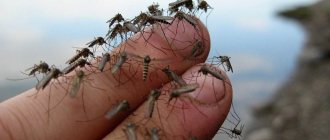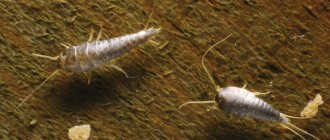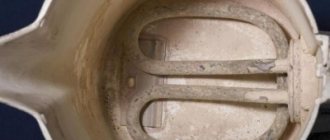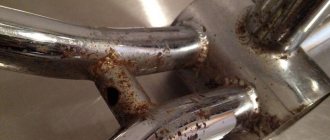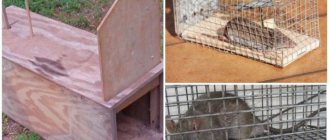The ground rat is a large field mouse, a small fluffy animal. The body length of the rodent can be up to 25 cm in length, and the weight ranges between 500 g. The most common are brown-black, but their color can be pure black, gray, brown, with a white stripe on the back. They do not create such a repulsive impression as ordinary rats, but if one of them gets into the garden or outbuildings, then serious damage to the household can be caused. The ground rat is often called the water rat; how to get rid of it is a popular question among gardeners and gardeners.
Description and features of the rodent
The ground (or water) rat is a large vole that prefers to settle near water bodies in areas rich in food. At the same time, it can live far from water - in meadows, vegetable gardens, fields and gardens.
The earth rat has a rounded body, a shortened muzzle with small ears, soft fur, and short legs. The tail is covered with sparse hairs and ends in a small brush about 0.5 cm long. The eyes are smaller than those of a rat. The front teeth (incisors) are brown-yellow in color. The fur of this animal is evenly colored dark brown, sometimes almost black.
The body length of adult individuals varies noticeably in the range from 110 to 260 mm, weight - from 120 to 500 g. The size of the tail is equal to half the length of the body.
Lifestyle
Ground rats are predominantly nocturnal, during which they spend most of their time in their burrows, coming to the surface only in search of food. This happens in the evening or at night. Moreover, the rats do not move far from the hole. Active at night, these rodents rarely catch the eye of gardeners. The presence of pests is indicated by eaten above-ground parts of plants and their sudden death.
Rat passages, up to 5 cm in diameter, lie at a depth of 10 to 80 cm. They are distinguished by a complex system of branches and considerable length. The underground labyrinth connects the nest, storage areas and numerous exits to the surface. The rat rests in the nest and breeds offspring. To build it, rodents use grass, sticks, twigs, paper, and pieces of fabric. In their pantries, rats stock up on food for the winter. They can store plant roots, seeds, root vegetables, and bulbs. The deepest chambers save rats from winter frosts, but it is in the upper chambers that the rodent spends most of the time.
Interesting! If there are mole holes near the rodent passages, then the rats use ready-made labyrinths to move around.
In places where burrows are made, pests destroy the root system of any plants, be they bulbs, root crops, weeds, fruit trees or shrubs. Ground rats, also called water voles, can swim well and climb trees. In winter they eat what they stored in summer.
Interesting to know! Ground rats do not hibernate. At this time, they live underground and close the entrance to their burrows, thus protecting themselves from the cold. In hot weather, they do the same, protecting the hole from too high a temperature.
Diet
Proliferating earth rats in the countryside are a real disaster for the owners, since by digging holes, they destroy all the plants in their path. Loves root vegetables and flower bulbs. Eats roots and green parts of plants. If you come across young trees or bushes along the way, then earth rats can cause their death. They gnaw the roots, eat the bark, after which the plant becomes sick and may die. Rats prefer apple trees, bird cherry and willow.
In addition to plant foods, earth rats eat insects, bird eggs, chicks, and even their close relatives - small field mice. Living near bodies of water, the ground rat swims well and dives well. Underwater it catches aquatic plants, small fish, mollusks, crayfish, insects and their larvae.
Rodents eat not only the roots and tubers of cultivated plants. Weeds are also part of their diet.
Habitat
Favorable living conditions for these animals include a sufficient amount of food, most of which is plants. The central parts of the country, the southern regions of Siberia, the Caucasus and Central Asia meet these requirements. In northern regions, where there are very low temperatures and there is no food, rats do not live.
The ground rat prefers to settle near bodies of water. They are attracted to wet lowlands rich in food along the banks of reservoirs, areas near swamps and damp meadows. During river floods, rodents move to drier, more suitable places for life.
Earth rats leave their previous habitats due to natural disasters such as floods, droughts, early frosts or simply lack of food. When such conditions occur, rodents move to fields, gardens and orchards in search of food, causing significant damage to the crop.
Preventive measures
The following preventive measures will help prevent the appearance of earth rats on the site:
- timely weeding, removal of plant debris (fallen leaves, rotten fruits, dead wood);
- keeping the area clean (there should be no garbage or food waste);
- deep digging of beds and row spacing in the fall after harvesting;
- regular inspection of the area for the presence of burrows;
- the compost pit should be equipped in the far corner of the site, away from the beds.
When harvesting, it is very important to check that there are no root crops left in the ground, and that there are no remains of herbs and vegetables in the beds. A cat or dog periodically walking around the area will also help protect against rodents.
How harm can be done
The settled earth rat damages agricultural lands such as pastures, hayfields, gardens and fields, as well as garden and summer cottage plots. The damage caused by rodents is that:
- Making burrows in grain fields, they gnaw at the roots of plants, causing them to wither and die. In addition, they throw earth out of their holes and cover the ripening spikelets with it. They lie on the ground, crumble, and get tangled. A large colony of rodents that has settled in the field will make it difficult to harvest with machinery - the fallen spikelets will remain on the field.
- In pastures and hayfields, rat colonies lead to massive death of herbaceous plants.
- Rodents that breed in vegetable fields take small root crops into their pantries, and eat large ones, which greatly reduces the shelf life of carrots, potatoes and beets.
- In gardens and forestry they gnaw the bark of trees and shrubs and gnaw the root system. The trees become sick and subsequently dry out.
- Water voles love to feast on melons and melons. The watermelons and melons they eat quickly spoil.
- In summer cottages, the harvest of vegetables and fruits is destroyed. Dangerous for young pets and birds.
- When there is a shortage of food, they sneak into warehouses where they eat vegetables and grain.
- They can infect people with fever, tularemia, plague, encephalitis, and leptospirosis.
Attention! The damage caused by the earth rat to gardeners, gardeners, and farmers is irreparable. A large colony of rodents can damage the entire crop. By damaging the bark of trees, they harm future crops. An attack by a large number of pests is dangerous for domestic animals and birds.
Why do earth rats appear?
There are several main reasons why there are rats in a summer cottage. The first is the abundance of food, which allows rodents not only to eat plenty, but also to stock up for the winter. The second reason for the appearance of earth rats in the countryside is the large number of places suitable for constructing a convenient and safe shelter.
Rat "gang"
Rodents make nests in cellars and basements, sheds and outbuildings, and also actively inhabit tunnels previously dug by moles and shrews.
Methods of pest control
You can get rid of rodents using various methods. There are physical, chemical and biological methods or combinations thereof. Measures to get rid of rodents are carried out in the premises where they are seen or on agricultural land, in gardens and vegetable gardens.
TOP 20 effective poisons for rats and mice
Each of the methods of struggle has its own nuances that are worth paying attention to. So, when using the physical method, you will have to get rid of dead rodents yourself. When using the chemical method, measures should be taken to prevent the death of domestic animals from eating poisonous baits or poisoned animals. This condition can only be met in closed spaces. The safest is the biological method, but its use will require patience and systematicity from you.
Physical methods include the use of:
- mechanical and electrical rat traps;
- glue rat traps.
The chemical method involves using poisons to kill rodents. In this case, both ready-made preparations and poisons are used to independently prepare baits.
Biological involves creating conditions unsuitable for animals to live in gardens and summer cottages or using natural enemies of these rodents to catch them. So to repel pests they use:
- odorous plants, the smell of which rodents do not like. This is mint, chamomile, tansy or wormwood;
- ash - it causes discomfort to pests;
- sticky weed seeds;
- pungent odors of acetone, kerosene, alcohol solution of naphthalene, gasoline, burnt wool.
Attention! To protect your garden or garden from earth rats, you need to do your best to prevent their appearance. To do this, fence the area with a fence on a deep foundation made of fine metal mesh, plant elderberry bushes, get a rat-catcher cat or a burrowing dog. These measures will help protect against rodent infestations.
Biological method
The main natural enemies of rats are dogs and cats of some breeds. This is how burrowing dogs (dachshunds, terriers) and rat-catching cats successfully catch rodents.
But even here there are drawbacks - when hunting for pests, dogs tear up their holes, causing even more damage to the beds. Due to the fact that rats are carriers of diseases, your pet may become infected with worms, fleas or dangerous infections. In this case, the biological agent gives results only in the presence of individual individuals. It will not cope with the destruction of an entire colony.
Humane ways of disposal
For some people, physically killing rodents is unacceptable, so they prefer to simply scare them away. For this purpose, ultrasonic devices, some plants or seeds, strong odors, and flooding of burrows are used.
Ultrasound
Depending on the method of application, there are two types of ultrasonic repellers:
- intended for work in ground space;
- for underground use.
Ground-based ultrasonic repellers are not designed to expel ground rats, as they spend most of their time in their burrows underground. The latter successfully repel earth rats and other underground pests. Their range of action ranges from 12 to 17 meters. Batteries or accumulators are used as a power source. Some models charge from sunlight.
The advantages of these devices:
- humanity, earth rats do not die, but simply leave the territory;
- you don't have to collect and dispose of dead rat carcasses
- simplicity and ease of use - just plug the device into the ground and turn it on;
- the device affects all underground pests (moles, slugs, etc.);
- safe for people and other animals;
- the result occurs already on the second or third day;
- The durability of the devices allows them to fully pay for themselves.
But there are also several disadvantages:
- when the device is turned off, the rats may come back again;
- Along with pests, beneficial insects such as worms, spiders and others living in the ground will also leave the area.
Flooding of holes
Water voles are excellent swimmers, but they cannot live in wet soil and leave flooded burrows. In order to drive out rodents, in one of the moves it is necessary to push the hose as deep as possible and supply water under maximum pressure for several hours. Flooding should be carried out several times until all the rats leave their homes.
Black elderberry
Elderberry helps fight earth rats in the garden. Its smell successfully repels mice and rats. The roots of black elderberry produce hydrocyanic acid, which is moderately toxic to mammals. Therefore, rodents do not live where elderberry grows.
This property is actively used by summer residents by planting elderberry bushes on their plots (or around them).
Toxic substances and chemicals
The fastest and most effective way to get rid of earth rats on your property is to use poisons and chemicals. Modern rodenticides differ in the nature of their effect on rodents. Some poison pests when they enter the stomach, others (fumigants) act by inhalation. As a result, the animals that eat the poisoned bait die.
This method has some disadvantages:
- Carelessness can lead to poisoning of crops, as well as people and animals.
- It will most likely not be possible to find all the carcasses of dead rodents, which will lead to the spread of an unpleasant odor throughout the area.
- The body of rats very quickly gets used to the use of poisons, so with prolonged use, the effectiveness of the drug noticeably decreases. In addition, rats can understand why their relatives are dying, and they will not eat this bait.
To use poisons effectively you must:
- Know exactly the location of their paths, burrow entrances and place bait in these places.
- For several days you need to feed them with the product that will later be poisoned. After the animals lose their caution, they are given bait with poison.
- After the effect occurs, both fertilizing and poisoning are changed.
When using pesticides, you must be careful:
- Before starting work, consider ways to protect pets and children from contact with the poison.
- Perform all work using protective equipment: a respirator and rubber gloves. Gloves will not only keep you safe, but will also protect the bait from human odor.
- Do not eat vegetables that have signs of rat bites: they could be left by poisoned animals.
Traditional methods
There are many reasons why gardeners try to get rid of rats using folk remedies. At the same time, you should remember about the fertility of rats. Delaying their extermination leads to population growth. Homemade and industrial traps of a wide variety of designs and repellers are popular among the people.
Traps
Traps are successfully used to control rats. They are adhesive, electrical and mechanical. There are even traps for several animals. But they all have one drawback - smart rats quickly understand that you can’t approach them and avoid them.
Mousetraps
To catch rats, mousetraps are used, the design of which allows you to catch rats alive or kill them on the spot. Simple mechanical traps with a powerful spring can be considered much more dangerous to handle than modern battery-powered electric rat traps. A child or pet can easily get into it.
Electrical
Trying to eat the bait from an electric trap, the rat closes the electrical circuit on itself. A high voltage current passes through its body, which leads to almost instantaneous death of the animal. Some models have a built-in indicator that reports the presence of a caught animal. It is very comfortable. The power source for such traps is AA batteries. The disadvantages of the devices include high cost.
Adhesive
Glue traps for pests are quite effective, but completely inhumane. An animal caught in a trap dies painfully within a few days. The principle of operation of a glue trap is quite simple: once you step on a surface coated with glue, the rodent is caught. All attempts to free yourself lead to even greater adhesion. A correctly chosen location for installing a sticky rat trap allows you to catch even the most cautious rodents.
Like any other product, glue traps have disadvantages.
- If dust or moisture gets on the surface of the glue, it can reduce its effectiveness, so you need to keep the surface of the sticky rat trap clean and replace it if necessary.
- The use of this method cannot be called humane. A trapped rodent dies painfully from thirst within a few days.
- There is a possibility that the glue will get on the skin of children and the fur of pets.
- Rats and mice stuck to the trap emit loud squeaks or even squeals for a long time, which causes significant inconvenience to people.
The effectiveness of this method is comparable to well-proven mechanical mousetraps and rat traps. The glue is non-toxic and does not dry out in the open air. When making these traps, attention should be paid to the size of the substrate on which the glue will be applied and their location (to protect children and animals).
Smoking
Earth rats cannot stand the smell of burning wool. If you have scraps of skins or fur, you need to set them on fire and put smoldering pieces of wool in all the discovered exits from the hole. In addition, you can use rags placed in plastic bags with holes, soaked in acetone, kerosene, an alcohol solution of naphthalene, or gasoline. The bags are used to ensure that the scent lasts as long as possible.
Cardinal remedies
Since rats are distinguished by their intellectual abilities, in order to get rid of them, it is necessary to resort to various methods:
- mousetraps;
- traps;
- traps;
- toxic substances;
- bait with poison.
Regular mousetraps can only be used once. If a rodent notices that another animal has fallen into a mousetrap, it will not come close to it. Mousetraps and traps are placed in the rat's hole in such a way that it is sure to fall into them: the hole is dug up a little, a trap is placed in it, and the top is covered with earth.
There are four types of traps:
- adhesive;
- catch cylinders;
- electric traps-repellents;
- mechanical mousetraps.
The pest's hole is not so easy to find. Rats protect their home well from prying eyes, camouflage it by covering it with garbage, branches, and leaves.
Poisonous substances and poison baits are more effective than traps. The poison can be poured directly into the hole. A mixture of poison and grain is also prepared: 30 g of the drug “Ethylphenacin” is mixed with 1 kg of wheat.
Prevention measures
To protect the grown crop from pests, it is necessary to create unfavorable conditions for the life and reproduction of pests. To this end, a number of preventive measures are carried out:
- In the fall, deep plowing of the fields is carried out, as a result of which rat holes are destroyed.
- Install mesh barriers to protect warehouses, granaries, cellars and communications leading to them from the penetration of water rats.
- Maintain cleanliness on the territory of these facilities, avoid cluttering the areas with garbage and food waste.
- They cultivate the areas, freeing them from dead wood, weeds and fallen leaves.
- Deratization is systematically carried out using pesticides and mechanical traps for rats.
These measures prevent the spread of pests to new areas.
You can protect your site from the invasion of earth rats with the help of preventive measures, which consist in eliminating favorable conditions for the life of these pests. But if this does not help, and rodents still appear, you should immediately take measures to expel or exterminate them. Each owner chooses his own measures to combat earth rats in the garden, humane or not. And we wish you a calm and fruitful summer season!
Folk remedies
Folk remedies are less effective, but they are simple and do not require financial costs, which is why they are popular among people.
A pungent smell can quite realistically scare away rodents and force them to leave not only the garden, but the house or apartment. Such “odors” include the smell of a burnt rabbit skin or a burnt car tire placed in a hole. Pests also cannot tolerate the smell of wormwood or mint, which is more pleasant to humans. Planted at the dacha, such plants will protect the area.
If you need to free an open area of land, such as a vegetable garden, from rats, you can try flooding the holes with water. Despite its simplicity, you are guaranteed to get rid of rats, especially if the flooding is repeated.
You can also recall such a feature of rodents as intolerance to noise. How to create it is up to everyone to decide for themselves, depending on their preferences. Some people regularly play loud music if their dacha neighbors allow it, while others hang empty cans or rustling cellophane in the garden. The result will be equally effective.
Since the animals are excellent at climbing trees, you can dig around them so that a small ditch is formed, and pour water into it along with peat crumbs mixed with kerosene.
Signs of presence
It’s not at all difficult to guess that it was a water rat that visited the site. If they can be confused with moles based on the piles of discarded earth, then the remaining signs are very individual:
- trampled beds with stumps of gnawed plants . People call them “feed tables”;
- holes of different sizes and at different distances . Moles have approximately the same characteristics;
- eaten root vegetables. Water rats not only drag beets, potatoes, and carrots into holes, but also gnaw on the spot everything that they cannot carry away;
- nests at the roots of garden trees . They become especially noticeable in winter, when the labyrinths emerge from under the snow;
- there are many individuals of the species in the area . If there are pests in the fields, in other areas, near water bodies nearby, they are unlikely to miss a specific area.
Of course, the most striking indicator would be to spot a water rat in person at the crime scene. Many of them have the audacity to openly dominate foreign territories.
Professional repeller
Currently, ultrasonic repellers are very popular. Its action is aimed at the psyche of rodents. A certain frequency of sound is not perceptible to humans and domestic animals; it affects rodents with great force. The devices operate on mains power or batteries. Each model has its own radius of influence. Rodents are literally going crazy. A few days of his continuous influence and they will begin to leave the territory.
According to reviews, the devices are quite effective indoors, but are less effective in open spaces. Another point is that it is unknown how far the pests will go. If the repeller is turned off, then they can return.
